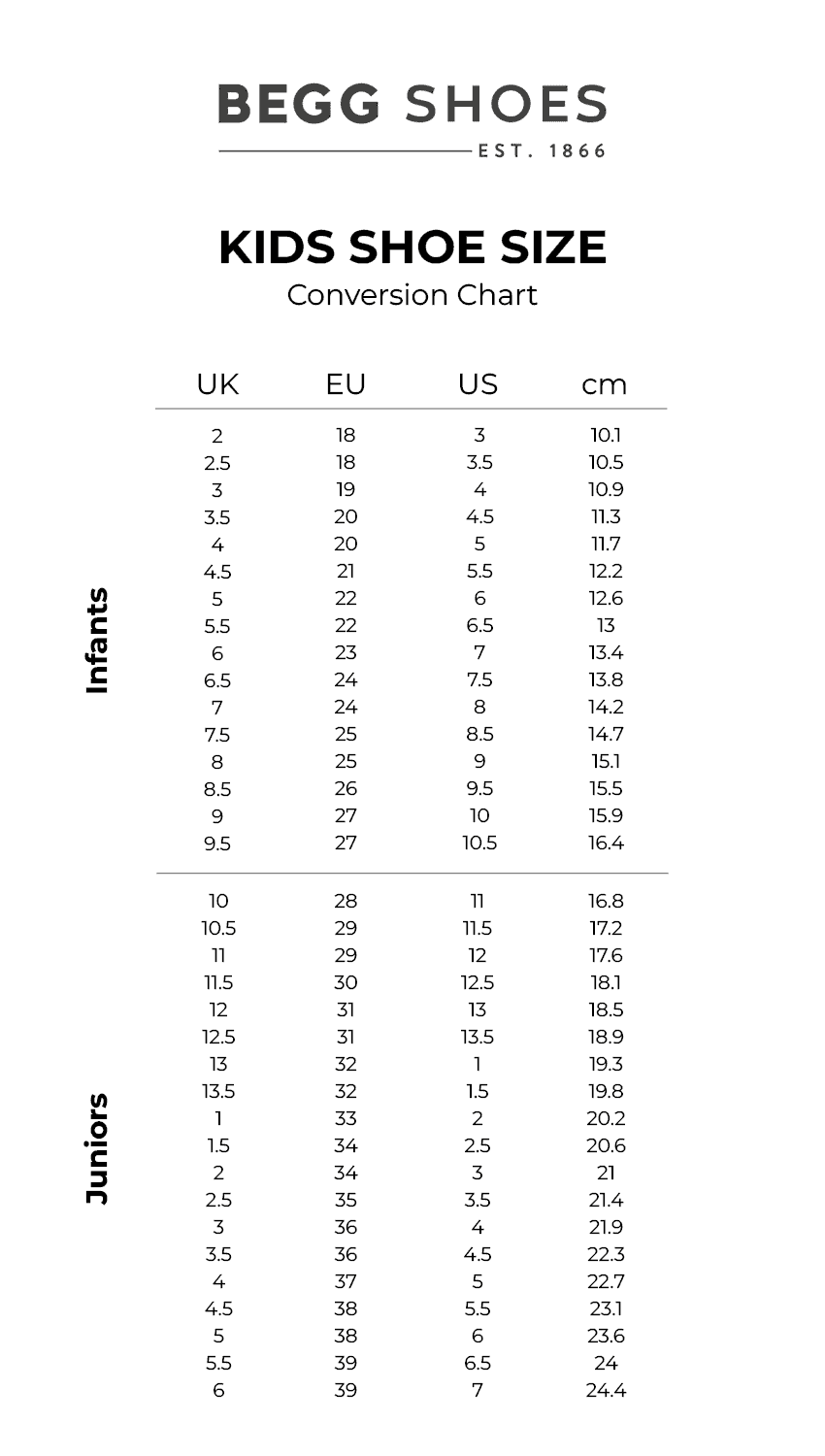Welcome to The Ultimate Guide to Kids’ Shoe Size Conversion
Get ready to step into the joyful journey of finding the perfect fit for your little one’s feet with our easy-peasy shoe size conversion tips!
Why the Right Shoe Size Matters for Kids
As parents, we want the very best for our children. And believe it or not, the right shoe size does wonders for your child’s comfort and foot health! Wearing ill-fitting shoes can lead to all sorts of troubles – from blisters to improper foot development. That’s why we’ve created this handy guide to help you master the craft of children’s shoe size conversion, ensuring those precious toes are always happy and healthy.
Understanding Children’s Shoe Sizes
Before we dive into the nuts and bolts of shoe size conversion, let’s get the basics straight. Children’s shoe sizes can vary greatly – not just by length, but also by width. Shoe sizes are often listed by different measurements around the world, including the US, UK, Europe, and even Japan. Our guide covers them all!
Measuring Your Child’s Feet Correctly
A good fit starts with accurate measurement, and measuring your child’s feet is easier than counting 1-2-3! All you need is a piece of paper, a pen, and a measuring tape or ruler. Have your child stand on the paper, draw a line at the heel and the longest toe, and then measure the distance between these two points for both feet. Remember, it’s normal for feet to differ slightly in size – always choose the shoe size that fits the larger foot.
Navigating Shoe Size Conversion Charts
Once you have your child’s foot measurement, it’s time to convert it to the correct shoe size. Our conversion charts are like a magical map, guiding you to the treasure of a flawless fit! They’ll show you how to translate the foot length into the corresponding size for different countries and shoe manufacturers.
Tips for Successful Online Shoe Shopping
Online shopping for kids’ shoes doesn’t have to be an epic quest. With our insider tips, you’ll be the hero who conquers size uncertainty. Always make sure to check the retailer’s size chart, read reviews for sizing advice, and look for shops with flexible return policies, just in case the shoe doesn’t fit.
Knowing When to Size Up
Children grow at warp speed, and their shoe sizes are no exception. It’s wise to leave a bit of growing room, typically around a thumb’s width between their toes and the end of the shoe. But don’t go overboard – shoes that are too large can be just as harmful as those that are too small.
Special Considerations for Children’s Shoes
Let’s not forget that every child’s feet are as unique as their personality. Factors such as arch support, shoe width, and different types of fastenings can all influence the fit and comfort of the shoe. We’ll guide you through these considerations to help you make informed choices.

5 Essential Preparation Tips for Shoe Size Conversion
-
Understand the Growth Spurt Timings:
Kids’ feet grow in spurts, and it can be quite sudden. Familiarize yourself with these growth patterns to better anticipate when it’s time for a new pair of shoes. Every child is different, but on average, young children tend to need new shoes every three to four months.
-
Learn About Different Sizing Systems:
Broaden your knowledge about various international sizing systems since size labels can vary from country to country. Find out how US sizes compare to European and UK sizes. This will prevent confusion when shopping from international brands.
-
Regularly Measure Your Child’s Feet:
Children’s feet grow fast, and what was a perfect fit a month ago may not be now. Measure their feet every few months to ensure their shoes fit well and are comfortable. An efficient way to do this is by marking their foot length on paper and comparing it to size charts.
-
Account for Different Shoe Types:
Remember, not all shoes fit the same! The type of shoe—whether it’s a sneaker, boot or sandal—can affect how a shoe fits. Leave some wiggle room for socks, especially for tight-fitting shoes or specialty footwear like sports cleats or ballet shoes.
-
Check Reviews and Recommendations:
Before settling on a shoe size based on a conversion chart, glance through reviews or ask for recommendations on fit from other parents. Some brands might run larger or smaller despite what the size chart indicates.
Finding the Perfect Fit: Size Conversion in Detail
Finding the right shoe size can sometimes feel like a puzzle. But when you’re equipped with the correct information, it’s a piece of cake! Let’s break down everything you need to know to ensure that perfect fit for your child:
-
Size Conversion Charts:
Use our detailed size conversion charts for an at-a-glance understanding of how your child’s foot measurements line up with different shoe sizes. Look for charts that include inches, centimeters, US, UK, European, and other international sizes.
-
Width Measurements:
Don’t neglect the width of your child’s foot! Shoes that are the correct length but too narrow or too wide can be uncomfortable. Some brands offer wide or narrow options, so consider this when shopping.
-
Virtual Fitting Tools:
Many online retailers offer virtual fitting tools that can help you identify the correct size. These are fantastic for getting closer to the perfect size without stepping into a store.
-
Keep Up with Manufacturer Size Guides:
Even within the same sizing system, manufacturers might have slightly different fits. Always review the manufacturer’s specific size guide for the best results.
Real-Life Size Conversion Examples
To bring shoe size conversion into perspective, let’s look at some real-life examples. Imagine you’re converting a US size 7 in kids to European sizes. According to most conversion charts, a US size 7 would roughly translate to a European size 23 or 24, depending on foot length in centimeters.
Another scenario could be finding the UK size for a child who is currently wearing a European size 27. In this case, you’ll likely be looking at a UK size 9. It’s all about matching the measurement to the corresponding international size!
Useful Interactive Tools and Resources for Size Conversion
We live in a time where technology can ease our daily tasks, including shoe shopping for our kids! Utilize interactive tools such as online calculators, size predictors, and even AR-based apps that can scan your child’s feet and recommend sizes. These resources make finding the perfect shoe size conversion a breeze!
For more great articles please see here. For more information see here
Disclaimer
The articles available via our website provide general information only and we strongly urge readers to exercise caution and conduct their own thorough research and fact-checking. The information presented should not be taken as absolute truth, and, to the maximum extent permitted by law, we will not be held liable for any inaccuracies or errors in the content. It is essential for individuals to independently verify and validate the information before making any decisions or taking any actions based on the articles.




